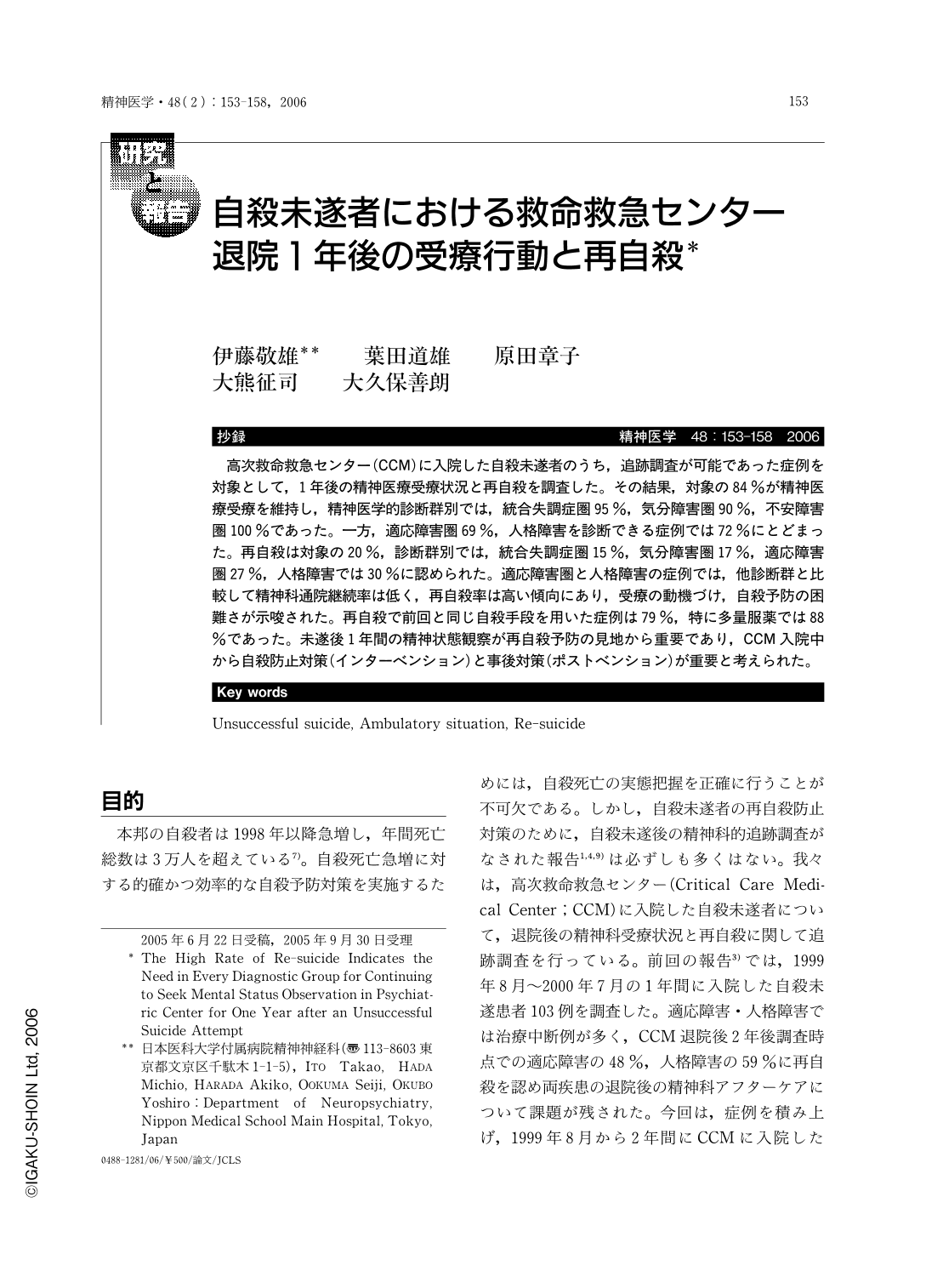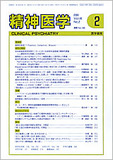Japanese
English
- 有料閲覧
- Abstract 文献概要
- 1ページ目 Look Inside
- 参考文献 Reference
- サイト内被引用 Cited by
抄録
高次救命救急センター(CCM)に入院した自殺未遂者のうち,追跡調査が可能であった症例を対象として,1年後の精神医療受療状況と再自殺を調査した。その結果,対象の84%が精神医療受療を維持し,精神医学的診断群別では,統合失調症圏95%,気分障害圏90%,不安障害圏100%であった。一方,適応障害圏69%,人格障害を診断できる症例では72%にとどまった。再自殺は対象の20%,診断群別では,統合失調症圏15%,気分障害圏17%,適応障害圏27%,人格障害では30%に認められた。適応障害圏と人格障害の症例では,他診断群と比較して精神科通院継続率は低く,再自殺率は高い傾向にあり,受療の動機づけ,自殺予防の困難さが示唆された。再自殺で前回と同じ自殺手段を用いた症例は79%,特に多量服薬では88%であった。未遂後1年間の精神状態観察が再自殺予防の見地から重要であり,CCM入院中から自殺防止対策(インターベンション)と事後対策(ポストベンション)が重要と考えられた。
Summary
Among those who had attempted suicide and who had been hospitalized in high level critical care medical centers (CCM), we investigated, incases where follow-up survey was possible, the relationship between regular psychiatric examination and re-suicide after one year. As a result, we found that 84% of the subjects maintained relations with the psychiatric treatment department. In each psychiatric diagnosis group, the rate of continuing psychiatry examination was surveyed. It was 95% in the schizophrenia group, 90% in the mood disorders group and 100% in the anxiety disorders group. On the other hand, it remained at only 72% in the adjustment disorder group, and at 69% in the diagnosable personality disorder group. All told, 20% of diagnosable people who attempted suicide were victims of re-suicide. This was found in 15% of the schizophrenia group, in 17% of the mood disorders group, in 27% of the adjustment disorder group, and in 30% of the diagnosable personality disorder group. In the adjustment disorder group and the diagnosable personality disorder group, the rate of continuing to undergo psychiatry examination tended to be lower than that of other groups re-suicide tended to be higher than that of other diagnosis groups.
Therefore, we suggested that these two diagnoses groups were less motivated to continue psychiatry examination which might have prevented re-suicide. In re-suicide, 79% of the unsuccessful suicide cases used the same means of suicide as they used in their first attempts. In particular, it was noticed that 88% chose ingestion as their means of suicide. From the viewpoint of prevention of re-suicide, we concluded that suicide preventive measures (interventions) were important during CCM hospitalization, and mental status observation for one year after attempted suicide is desirable.

Copyright © 2006, Igaku-Shoin Ltd. All rights reserved.


